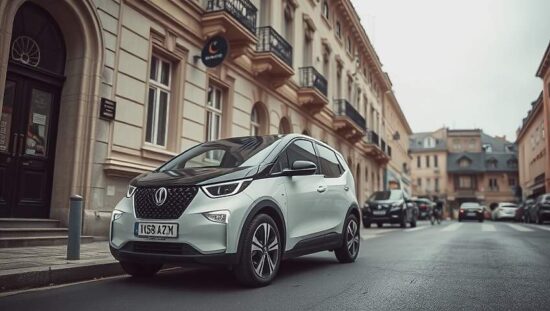The divergence in electric vehicle (EV) adoption rates among Europe’s leading automotive giants is exposing vulnerabilities in their strategies to meet increasingly stringent EU emissions regulations, according to a recent analysis by S&P Global Mobility. BMW, encompassing brands Mini and Rolls Royce, currently holds a lead, achieving a 24.5% share of battery electric vehicle (BEV) sales within the EU during the first nine months of this year. This contrasts sharply with Volkswagen’s 16.8% and particularly Stellantis, the second-largest European automaker, which trails with a comparatively weak 10.5% BEV share. Mercedes-Benz sits at 15.2%.
The figures, derived from nearly complete data, highlight a growing tension. Automakers are hesitant to publicly release these sales proportions, fearing they offer insight into their compliance with the EU’s escalating CO2 fleet emission targets and the potential for substantial financial penalties. The widely assumed benchmark for compliance is a minimum BEV share of 20%, a figure increasingly difficult to achieve uniformly across the industry.
The EU’s regulations mandate a fleet average CO2 emission limit of 93.6 grams per kilometer for all new vehicle registrations from 2025 – roughly equivalent to a 4.1-liter gasoline or 3.6-liter diesel consumption per 100 kilometers. Given the difficulty of achieving these figures with conventional internal combustion engine (ICE) vehicles, the target necessitates a considerable shift towards electric mobility.
The disparity in BEV adoption is raising questions about the long-term viability of different automakers’ strategies. Stellantis’ performance, in particular, suggests a potentially slower transition, forcing a closer examination of their investment strategy and production planning. While a temporary easing of the 2025 target, requiring adherence to a tiered average across 2025-2027, provides brief respite, it also underscores the urgent need for a more aggressive and potentially costly, acceleration of EV production and sales. The differing emission limits based on vehicle weight further complicate the landscape, placing a greater burden on manufacturers of lighter vehicles compared to those producing heavier models, potentially exacerbating existing performance gaps. The quiet release of these figures and the industry’s reluctance to embrace full transparency points to a calculated risk management approach under immense regulatory pressure.





